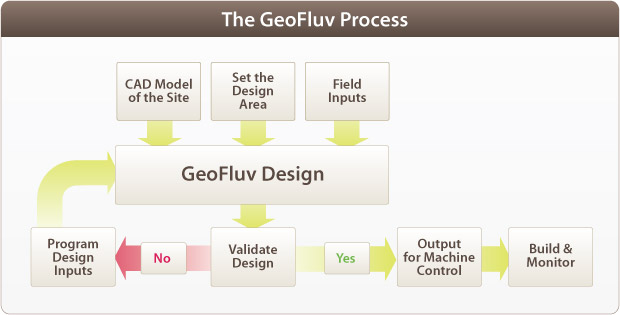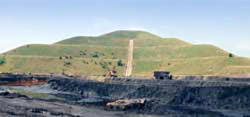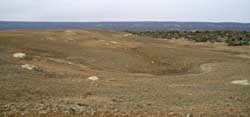What is GeoFluv™?
The GeoFluv™ approach recognises the critical importance of natural landforms as the basis for successful land rehabilitation. Natural landforms have developed over thousands of years through the action of water and erosion. They are considered “stable” as their changing form is imperceptible. The GeoFluv™ approach incorporates the key landscape characteristics of a site to design a surface that functions exactly the same as the stable landforms that surround it. It is a process that compresses 1000’s of years of earth shaping forces into a design, resulting in a “stable” landscape. The landform will not erode, will be suitable for re-establishing local flora and fauna and will not require costly long-term maintenance. GeoFluv™ landform designs are not only functional – coping with the complete range of rainfall and water discharge events that may occur, they result in natural “looking” landscapes that are pleasing to the eye and well accepted in the community.
How does the GeoFluv Approach work?

GeoFluv™ vs the Traditional Approach
 |
 |
Traditional Method |
GeoFluv Approach |
| Long, single gradient slopes that are subject to erosion. A range of techniques are employed to slow erosion including contour banks, rock drains and sediment ponds. | Creates a natural looking landscape with ridges that transition from convex to concave slopes, small sub-watersheds containing water channels that merge into larger water channels that are designed with the required cross sectional profile and sinuosity to handle variable flows. No artificial contour banks and rock drains required. |
| Appears as flat topped pyramids – with a number of rock down-drains. | Appears as a natural landscape. |
| Requires long term maintenance. | Stable landform that does not require long term maintenance. |
| Difficult to establish bio-diversity on slopes of single gradient and orientation. | Landscape variability promotes biodiversity – as the landscape has varying aspects and slope. |
| Does not require GPS guided earth-moving machines for construction. | Needs to be built with GPS guided machines. |
| Water run-off into surrounding streams often turbid and saline. | Water run-off in surrounding streams meets environmental requirements. |


